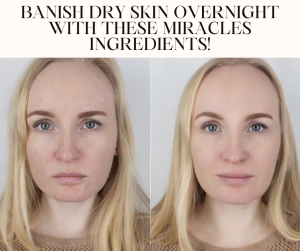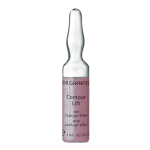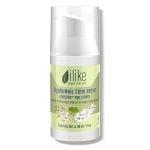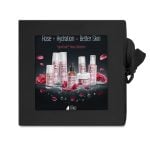
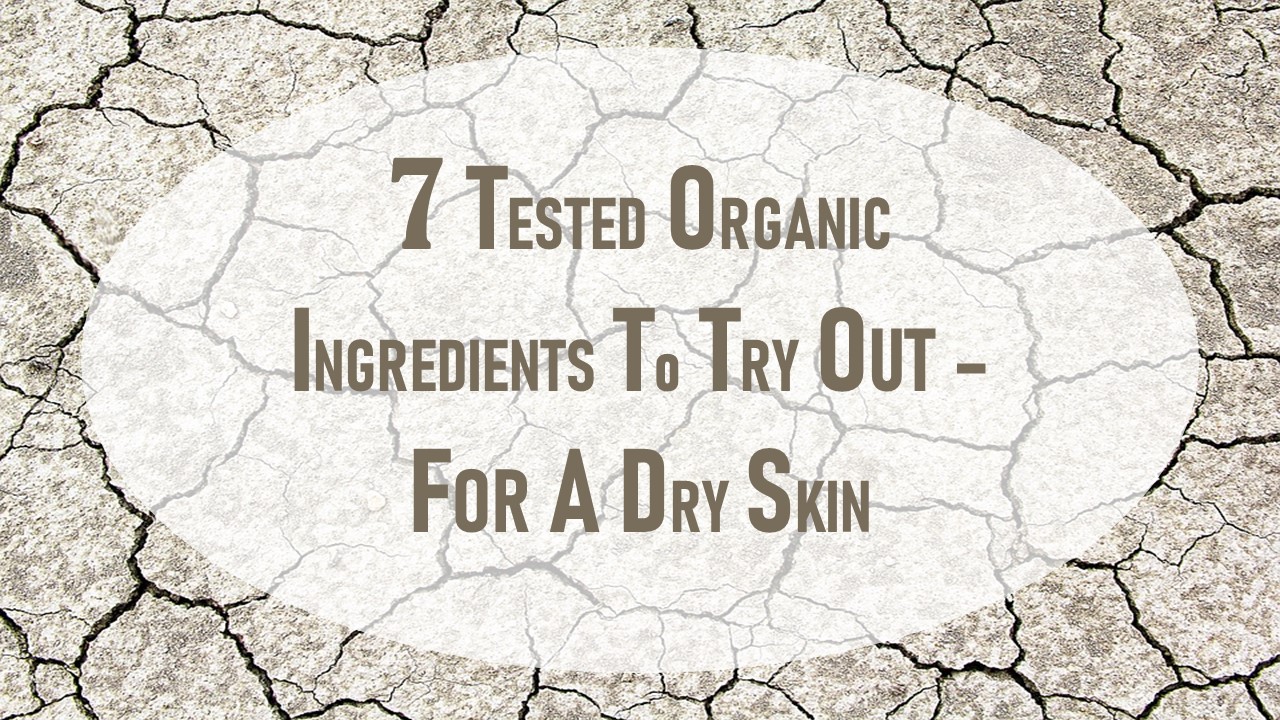
Lavish and Organic – 7 Ingredients to Heal a Dry Skin!
Dull, dry, and dehydrated-looking skin can be a challenge to treat. Many products (such as acne care treatments) can cause dry skin. No matter whatever is the cause, dry skin also causes your skin to irritate and itch. Excess scratch to the skin can make it hyper pigment too, especially; if you are a person with a skin of color. Moreover, dry skin can make your skin show signs of aging even earlier.
What Can I Use Naturally For Dry Skin?
Here we list down ‘The Top 7 Organic Ingredients For Dry Skin’:
- Coconut
- Cupuacu butter
- Cocoa butter
- Avocado oil
- Organic apricot kernel oil
- Goji berry
- Cranberry seed oil
So, before we get into further details on how to use organic ingredients for dry skin, let us first look at what causes dry skin in the first place!
What Are The Root Causes Of Dry Skin?
Dry skin lacks oil and water. When dry skin is subject to severe environmental stress, it further escalates to itchy and flaky skin. The root causes of dry skin usually are:
- Sun damage
- Harsh weather
- Using artificial products
Damage By Sun Rays
The sun’s rays can dry up the skin very readily, even causing it to age prematurely. It can damage up to the extent that the skin becomes flaky, losing moisture and elasticity. Therefore, choosing the right sunscreen for your face and body is necessary to ensure that your skin has the best treatment.
Harsh Weather
Harsh weather affects dry skin. The winter season can be very challenging for dry skin. It brings intense dryness absorbing more moisture and oils out of your skin, making it even worse. So, the winter weather has harmful effects relating to dry skin. But by making simple changes to your skin care routine this winter, you can end your misery!
Use Of Artificial Products
Artificial Products play an important role in further worsening your skin. These products destroy the outer epidermis (stratum corneum) of your skin. That makes your skin suffer in the long run.
That is because many cosmetic products alter the pH of your skin! Therefore, stop using artificial products in your skin care as they destroy the skin’s natural barrier.
The main motive here at organic skin care is to establish a go-to place to get pure and luxurious organic products. The objective was to provide skincare brands plant-derived so that your skin is close to nature. That will be helpful in the long run. The skin can only be healthy with the absorption of pure natural and organic ingredients.
Here are some other factors that can cause your face to get dry:
- you have a dry skin type genetically
- lack of humidity
- scrubbing your skin more often
- ditching on your moisturizers
- using skin care products that dry-out
- use of hard water on your face (as it can prevent your moisturizer from absorbing)
- use of soap for your face (instead of skin barrier-friendly cleansers)
- your skin is showing signs of aging or premature aging
- use of things like retinol without hydrating your face well
- overbathing or taking hot showers for long hours
- some medical problems
Your skincare products need organic ingredients that treat dry skin. Therefore, we have made a list of ingredients available to you that you must look for in your products.
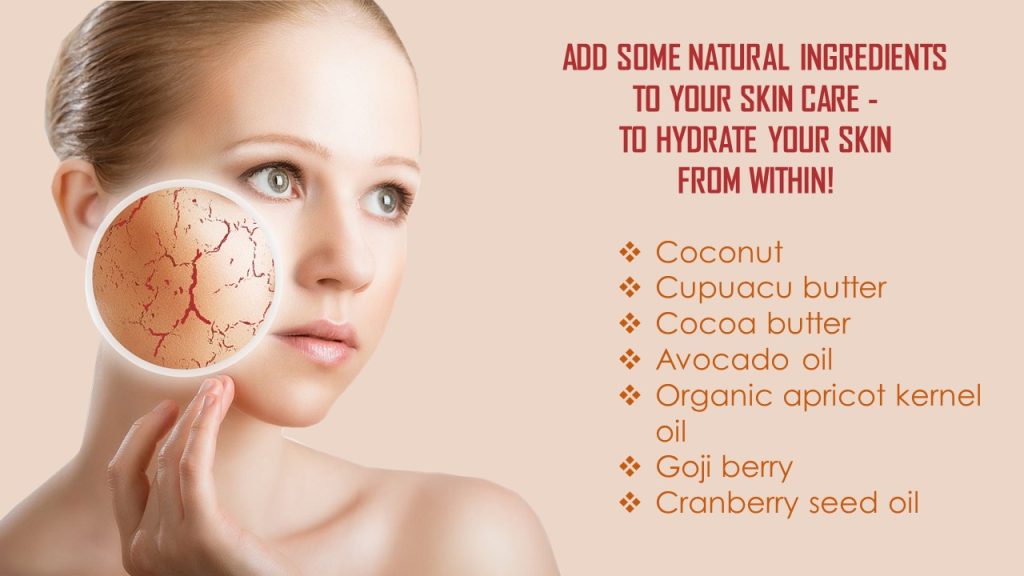
Natural And Organic Ingredients For Dry Skin
Coconut Oil
Coconut is an emollient moisturizer, a potent antioxidant that keeps your skin hydrated and enhances your skin. It moisturizes and treats skin infections (anti-microbial). You may have used it in your kitchen or even as an oil for your scalp. So, there is no wonder that you can use coconut oil for hydration.
Moreover, coconut oil can penetrate deep into the layers of the skin, which helps to hydrate your skin thoroughly.
Coconut oil, derived from coconuts, contains proven anti-inflammatory properties, which are very effective against skin burns and rashes.
Cupuacu Butter
It is a super-emollient that:
- restores the elasticity of the skin
- contains antioxidant
- provides hydration
- has water-loving properties, which act as a super moisturizer
Cupuacu butter is a type of vegetable fat that comes from the seeds of the cupuacu fruit, native to South America. It is rich in essential fatty acids, antioxidants, and phytosterols.
The highlighted property of this butter is that it can retain its moisture in the skin for up to several hours, which makes it a good choice among organic ingredients for dry skin.
Moreover, cupuacu butter is natural sun protection formula. Thus, it saves your skin lipids from UV damage. Also, it protects your skin barrier. That delays aging. And your skin retains moisture even more. Everything put together makes it a holy grail organic ingredient for dry skin.
How to use cupuacu butter?
Here are a few ways to use cupuacu butter for dry skin:
As a moisturizer: Apply a small amount of cupuacu butter directly to the skin, massaging it in gently until it is absorbed.
In a face cream: Mix cupuacu butter with other moisturizing ingredients, such as shea butter or aloe vera gel, to create a nourishing face cream.
In a DIY lotion or body butter: Mix cupuacu butter with other moisturizing ingredients, such as coconut oil or jojoba oil, to create a custom lotion or body butter.
Cocoa Butter
Cocoa butter has an added advantage because of its high content of high fatty, which acts as a protective layer around your skin, preventing loss of any moisture content.
Cocoa butter helps to keep your skin nourished and enhances elasticity. Also, it hydrates the skin and fades scars. It also improves your skin’s elasticity! Moreover, studies prove the skin-calming effects of cocoa butter.
Think of it as a natural emollient that can help hydrate and soothe the skin, leaving it feeling soft and smooth. When used in lotions, creams, and other skincare products, it forms a protective barrier on the skin, helping to lock in moisture and reduce the risk of dryness.
How to use cocoa butter for skin?
Cocoa butter can be used in many ways, depending on your specific needs and preferences. Some common ways to use cocoa butter include:
As a moisturizer: Cocoa butter can be applied directly to the skin to hydrate and soothe dry or irritated skin. You can use melted cocoa butter for this purpose.
As a makeover remover: Use melted cocoa butter as a makeup remover and ditch the makeup wipes!
In cosmetics: Cocoa butter is a popular ingredient in cosmetic products, such as;
- lotions
- creams
- lip balms
When using cocoa butter, it is best to start with a small amount and to apply it gently, as overuse can cause clogging of pores.
It is wise to choose high-quality, pure cocoa butter, as some commercial products may contain additives or other ingredients that can irritate the skin.
Avocado oil
Avocado oil is a rich, nourishing oil used in skincare products for its moisturizing effects. Avocado oil is high in nutrients and antioxidants, which help to keep your skin supple and hydrated. It contains omega-9 fatty acids and plant sterols. These fatty acids act as emollients to nourish and moisturize your skin. Also, it is rich in vitamins A, D, and E, which are all for healthier skin.
When used topically, avocado oil can penetrate deep into the skin to hydrate and nourish it from within, making it a popular choice for dry skin.
It is also said to help soothe and calm irritated skin and may even have anti-inflammatory properties, making it beneficial for those with conditions like eczema and psoriasis. However, as with all skincare products, do a patch test first and consult a dermatologist if necessary.
How to use avocado oil?
You can use avocado oil to help hydrate and nourish dry skin in any way:
As a moisturizer: Apply a few drops of avocado oil directly to the skin, massaging it in gently until it is absorbed. That can be done after a bath or shower, when the skin is still damp, to give you maximum hydration.
In the bath: Add a few drops of avocado oil to a warm bath to help hydrate and nourish the skin while you soak.
In a face mask: Mix avocado oil with other moisturizing ingredients, such as honey or oatmeal, to create a nourishing face mask. Apply to the skin and leave on for 15-20 minutes before rinsing off.
As organic face oil:
- Take about 3/4th of organic avocado oil.
- Add 1/4th of nourishing oil, such as tea tree oil, argan oil, or castor oil.
- Add a few drops of rosehip oil, chamomile oil, or any other essential oil to this mixture.
- Shake this mixture well. And here is how you get an organic face oil for face and body hydration. Apply twice a day.
In a DIY lotion or cream: Mix avocado oil with other moisturizing ingredients, such as coconut oil or shea butter, to create a custom lotion or cream.
And as always, watch out for additives or other ingredients that can be irritating to the skin!
Organic Apricot Kernel Oil
Apricot kernel oil resembles skin sebum making it easier to absorb into your skin. That helps to improve your skin tone. Also, it is rich in antioxidants, vitamin E, and fatty acids. Think of it as a nourishing oil moisturizer that gets deep into your skin and hydrates it immensely.
Organic apricot kernel oil is easily absorbable oil derived from the kernels of apricots. It is commonly used in skincare products, particularly for dry or sensitive skin, as it is rich in essential fatty acids and vitamins A and E.
When used topically, apricot kernel oil is said to help hydrate and nourish the skin, leaving it feeling soft and smooth. It is also said to have anti-inflammatory properties and to help soothe irritated skin.
How To Use Organic Apricot Kernel Oil?
Apricot kernel oil can be used on the skin by following these steps:
- Cleanse your skin and pat it dry.
- Apply a small amount of apricot kernel oil to your fingers.
- Gently massage the oil into your skin, focusing on dry or irritated areas.
- Leave the oil for at least 20 minutes or overnight for maximum hydration.
- Rinse your skin with warm water and pat dry.
Use apricot kernel oil at night before bed. That allows it to absorb well into your skin.
Also, you can use apricot kernel oil in combination with other skincare products, such as moisturizers and serums, for added benefits.
Goji Berries
It is a perfect non-irritating remedy for your skin dehydration. Goji berries are fruits rich in antioxidants and nutrients like vitamin C and beta-carotene. All of which are important for overall skin health. Moreover, goji berries have some building blocks of proteins that help to maintain skin moisture and hydration.
Moreover, goji berries are a part of anti-aging skin care products too. That is because of their potential to help protect the skin from environmental stressors that can cause premature aging.
How to use goji berries?
Here are a few ways to use goji berries for dry skin:
As a face mask:
- Soak goji berries in warm water for 10-15 minutes.
- Next, blend them into a paste.
- Add them to moisturizing ingredients, such as honey or yogurt, to create a nourishing face mask.
- Apply to the skin and leave on for 15-20 minutes before rinsing off.
In a tea or toner: Brew goji berries into a tea or toner and use it as a gentle cleansing and moisturizing rinse for the skin.
In a supplement: Take goji berry supplements, such as capsules or powders, to support skin health from the inside out.
Cranberry seed oil
Cranberry seed oil is a plant-based oil extracted from the seeds of cranberries. It is rich in essential fatty acids, antioxidants, and vitamin E, making it popular among organic ingredients for dry skin.
When used topically, cranberry seed oil is said to help hydrate and nourish the skin, leaving it soft and smooth. It is also said to have anti-inflammatory properties and to help protect the skin from environmental stressors.
How to use cranberry seed oil?
Here are a few ways to use cranberry seed oil for dry skin:
As a moisturizer: Apply a few drops of cranberry seed oil directly to the skin. And massage it gently until it is absorbed. That can be done after a bath or shower when the skin is still damp.
In a face oil: Mix cranberry seed oil with other moisturizing oils, such as argan or jojoba oil, to create a nourishing face oil. Apply to the skin and massage in gently.
In a DIY lotion or cream: Mix cranberry seed oil with moisturizing ingredients, such as shea butter or aloe vera gel, to create a custom lotion or cream.
Which Essential Oil Is Best For Extremely Dry Skin?
Essential oils are super-concentrated plant extracts for which studies suggest certain skin benefits. However, essential oils may cause skin irritation, rash, allergies, or adverse effects. So, you must pick up the correct essential oils and speak to your dermatologists before adding them to your skin care regimen.
Dilute essential oils to less than 5% concentration to prevent irritation!
Now let us tell you about essential oils that can provide some relief for extremely dry-out skin:
Sandalwood Oil
Sandalwood oil is extracted from the heartwood of the sandalwood tree and is native to India, Indonesia, and Australia. This versatile oil has many benefits for the skin, from reducing inflammation to promoting a youthful complexion.
Here are the effects of sandalwood oil on the skin:
- Moisturizes the skin: Sandalwood oil is a natural moisturizer that hydrates dry and sensitive skin. Also, sandalwood oil is non-greasy and non-comedogenic, making it an excellent choice for oily or acne-prone skin.
- Calm irritation and inflammation: Inflammation is a natural response to injury or infection, but it can also contribute to skin conditions such as acne, psoriasis, and eczema. Sandalwood oil has anti-inflammatory effects that calm irritated skin and reduce redness and swelling.
- Helpful against microbes: Sandalwood oil has antibacterial properties, which help acne and blemishes.
- Promotes a Youthful Complexion: That is due to its ability to stimulate cell growth and regeneration. Also, it is anti-inflammatory and has moisturizing properties. When used regularly, sandalwood oil can help youthful and radiant skin.
- Prevents Some Skin Cancers: Some studies suggest the anticancer effects of sandalwood essential oil.
How To Use Sandalwood Oil For The Skin?
Here are some of the most effective methods:
Use as a Facial Oil:
- Add a few drops to your regular moisturizer or face oil.
- Massage the mixture into your skin.
- Focus on areas that are prone to inflammation or dryness.
This method is perfect for dry or mature skin for deeper hydration and nourishment.
Add to Your Bath: For a relaxing and rejuvenating experience, try adding a few drops of sandalwood oil to your bath. The warm water will help to release the oil’s soothing and moisturizing properties, leaving your skin soft and hydrated.
Use as a Spot Treatment:
For those with acne or blemishes, use sandalwood oil as a spot treatment. Apply a small amount of oil directly to the affected area (using a cotton swab or your fingers). The oil’s antibacterial properties will reduce inflammation and prevent new breakouts.
Incorporate into Your Skincare Routine
Moreover, you can incorporate sandalwood into your regular skincare routine by using products that contain oil as an ingredient. Look for products such as:
- toners
- facial oils
- serums
Lavender Essential Oil
Lavender essential oil is a versatile and popular oil known for its calming and relaxing aroma. And it can improve skin health and overall appearance.
Lavender essential oil is also known for its moisturizing effects on the skin. It helps to hydrate and nourish the skin, keeping it soft and supple. That can be especially beneficial for those with dry or mature skin, as it can help to reduce the appearance of fine lines and wrinkles.
Other ways lavender essential oil can help your skin are:
- antibacterial effects
- anti-inflammatory effects
- promotes healing
- improves complexion
How to Use Lavender Essential Oil?
Using lavender essential oil for the skin is easy and convenient. Here are a few tips for incorporating it into your skincare routine:
- Add a few drops to your moisturizer or facial oil.
- Mix with carrier oil, almond, or jojoba oil, and use it as a face serum.
- Use as a spot treatment for breakouts or acne.
- Add to your bath water for a relaxing and skin-nourishing soak.
Chamomile Essential Oil
Chamomile essential oil comes from the flowers of its plant and is a member of the daisy family. This essential oil has a sweet, soothing aroma and is a light, pale yellow color.
- Moisturizes Skin: Chamomile essential oil is a natural moisturizer that can help to hydrate the skin and prevent dryness. It can be used as a standalone moisturizer or added to other skincare products for an extra hydration boost!
- Soothes Inflammation and Redness
- Reduces the Appearance of Fine Lines and Wrinkles
- Calms Skin Conditions
- Treats skin conditions such as eczema, psoriasis, and dermatitis
How to Use Chamomile Essential Oil for Skin
There are several ways to incorporate chamomile essential oil into your skincare routine, including:
- Add a few drops to your facial moisturizer.
- Use as a standalone moisturizer: Apply a few drops to your skin and massage it gently.
- Add to a bath for a relaxing and soothing soak.
- Use as an aromatherapy diffuser to promote feelings of peace and tranquility.
Always talk to your dermatologist before you start with essential oils. And do not forget to do a patch test before using essential oils.
What Ingredients Should I avoid For Dry Skin?
Here is a list of ingredients to avoid if your skin type is dry:
- soaps (as they are alkaline, they strip the natural skin barrier)
- concentrated retinol
- fragrances
- alcohol-containing skin care products that dry out too quickly
- salicylic acid
- glycolic acid

